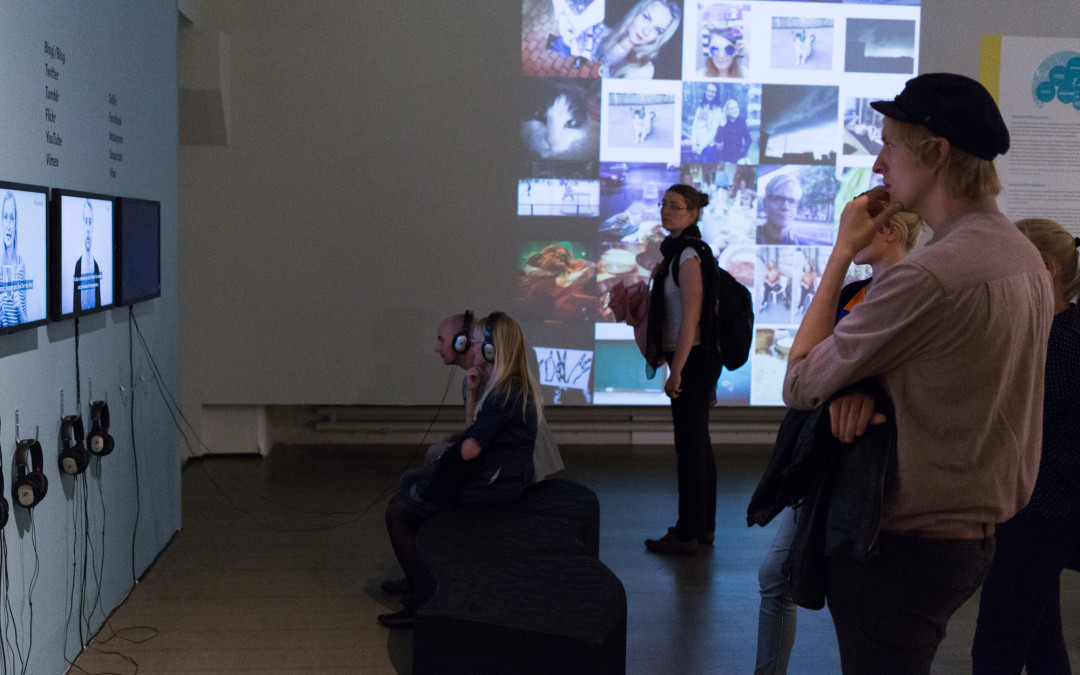Why do people photograph? How do they choose their themes, tools, materials and moments for the photographs? Where do they keep their photos? What information do they attach to them? How do they show their photographs and who gets to see them? These questions are interesting for a museum of photography anywhere and anytime. In the social media’s photo-sharing platforms, many of those questions remain the same, but new questions emerge. What is the effect of sharing and apps on how people take photographs? How does the dimension of likes and comments change the way photographs are made and shared? A vast number of private or amateur photography, as well as professional photos, are nowadays published in the photo-sharing social media platforms, particularly Instagram. This blog post is a light(-hearted) introduction to what those platforms mean to us as a museum.
Art in your Pocket
In the beginning of this year, we launched the “Pocket Gallery” in our Instagram feed. Each week, a new artist would take over our Instagram account and post their artworks into the gallery. The invited artists were chosen by a curator, with the help from our Instagram followers. The idea was not entirely original – we stole it from Fotografiska and many others. But it certainly works.
Reason to Walk
Together with other local organisations, we have arranged thematic InstaWalks in and around the museum building. Just like camera club members in the old days, many instagrammers love to go on photographic trips together, share their pictures and get feedback from each other. Not only online, but even IRL.
Meme generator
Selfies have always existed – well, depends on how you define it. But #duckfaces and #vadering? Born in Instagram! Photography, ways of being in a photograph, genres and sub-genres, ways of looking at photographs, and – perhaps more than anything – ways of commenting photographs have changed and new ways have developed in the social media platforms.
Filter for the past
Old family albums and printed newspapers might have fascinating photographs and fun or informative captions, but they lack one essential thing. The LIKE button. Last year, we had a chance to witness the results of an experiment: what happens when a group of teenagers gets to look at old press photographs as if they were their own.
Vanity Fair
For many, Instagram is like a glossy magazine: by following the aesthetically pleasant, stylish lifestyle feeds of one’s favourites, one can dream, be inspired or irritated, get ideas or steal them. By curating our own feed, we shape our public image and bash in the likes and comments. We are prosumers – producers and consumers of content. But how to bring that into a museum exhibition? We have tried a few different approaches: a curated slide show on big screens, a selection of images printed just like any new art photography, or a programmed live feed of selected hashtags on the wall of the museum.
Instant Archive?
We love it, we take part in it, we exhibit it. But how to collect the photography and the photographic cultures living in the social media? Like digital archive researcher Jessica Bushey and others have pointed out, Instagram and its likes are huge online archives – but not reliable ones, not archives working with cultural interest, archival expertise or ethics. This means we have to collect and archive the content we consider indispensable for our future audiences.
How shall we go about documenting, collecting, archiving the contemporary online photographic culture, its memes and filters and comments and likes? There are many questions – methodological, ethical, curatorial. We set out to solve those questions in the new, collaborative project.
/Sofia Lahti, The Finnish Museum of Photography, Finland

